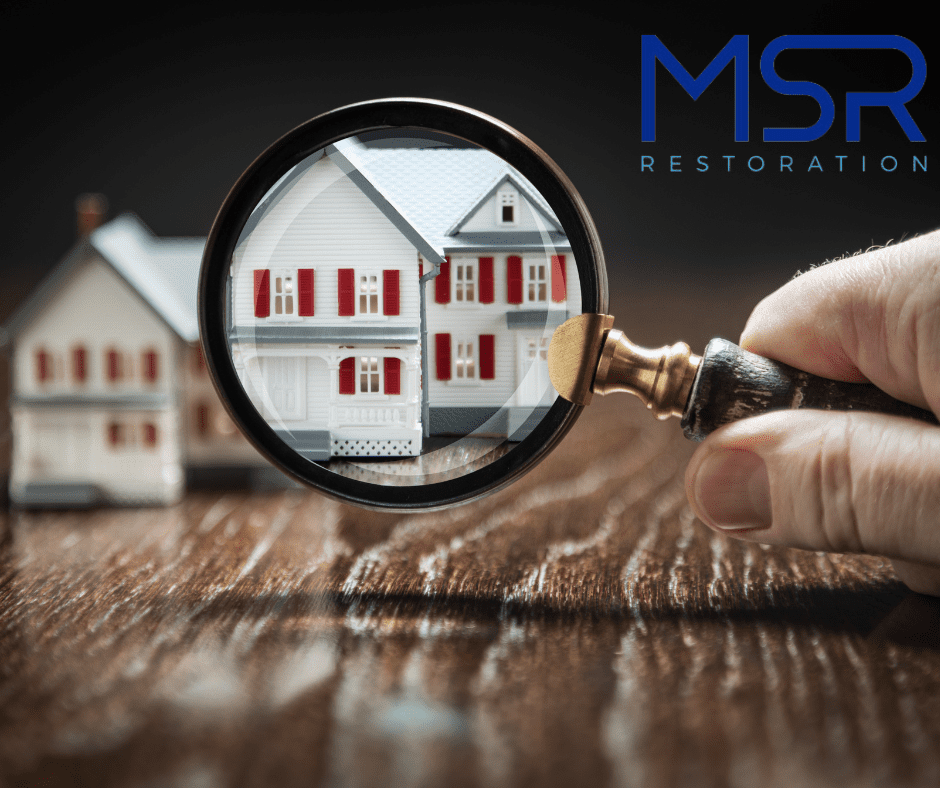Uncovering Hidden Mold in the House
Uncovering hidden mold in the house should be a top priority for homeowners. Discovering where mold is growing could prevent big problems down the road, from health issues, to property damage to home valuations. Mold can cause or make worse health issues such as respiratory infections, asthma attacks, and allergic reactions. Hidden mold can also create property damage, weakening the home’s structures like drywall, wood beams, and insulation. Finally, hidden mold can also decrease home value; mold damage is a definite red flag to potential buyers. Learning how to discover hidden mold in the house before it causes damage can mitigate its dangers.
A Room-by-Room Guide to Finding Hidden Mold in the House
It is recommended for homeowners to go room by room to periodically inspect for hidden mold in the house.
- Bathrooms – Finding mold in bathrooms can be difficult, but there are some signs that can be used to detect mold before it’s visible. Smell can be an early sign of mold; there is a distinctive aroma that can fill the bathroom. The smell is usually a musty odor and is commonly found in wet areas. Another common sign is dark spots that begin small and grow throughout time, and if they lighten, this is a signature of mold growth. Finally, if your bathroom is covered in wallpaper and it starts peeling, this is a sign of moisture and potentially collecting behind it.
- Kitchen – Finding mold in the kitchen can be an obstacle because of all the crevices and small places for this mold to grow. Recognizing specific locations in the kitchen that may harbor mold can help to prevent it all together. The first sign is usually a musty and earthy smell. Dark spots on surfaces such as the floor or the walls can be a sign of potential mold infestation. In addition, if your walls are warped or filled with bubbles, this is a telltale sign of mold.
- Bedrooms – One of the more difficult places to identify hidden mold is the bedroom. They are less damp than many other areas of the home so it is easier for a homeowner to overlook the possibility of mold in the bedroom. One of the main signs of potential mold in the bedroom is condensation on windows. In addition, closets can become damp due to the lack of ventilation in these enclosed spaces. Finally, be aware of cracking paint on the walls, a sign of moisture growth behind the surface of the walls.
- Basement – Basements tend to be the most common place to find mold because of moisture content. A major sign is excessive dampness and humidity in the basement. If the air in your basement feels thick or dense, this is a sign of a mold infestation. Black spots and stains whether the basement is carpeted or not is another major indication of mold.
- Attic – Finding mold in an attic will depend on the structure and spacing of this room. One of the early signs of hidden mold in the house’s attic is the development of frost during the colder months. In addition, inspect for mold within the ductwork of the ceiling – this especially concerning as this could be a catalyst to mold spreading throughout the house. Just like the basement, look for visual evidence such as blemishes on the insulation, peeling walls, and dark spots on the ground and damp surfaces.
- Crawlspace – To identify mold in the crawlspace, inspect damp dark corners within the space. Be sure to look closely for moisture building up on pipes, insulation, and any windows.
- Garage – Garages tend to develop mold at a rapid rate. One of the major signs of mold developing in the garage is dark coloring of the grout on the garage floor. Another sign of hidden mold in the house’s garage is water staining on the floor and the walls. Be aware of a damp and musty smell spreading in the garage too.
Where Moisture Meets Mold: Areas of Hidden Mold in the House
Hidden mold develops extremely easily in damp areas of the home. The tricky thing about mold is that it develops effortlessly and often undetected due to its rapid multiplication. A complicating factor in the development of hidden mold in the house is trapped moisture in hard to reach spaces. It is important to be aware of the various places mold could develop and to become aware sooner rather than later to prevent a larger issue.
The Dangers of Hidden Mold in the House
The dangers of hidden mold in the house are numerous and include multiple health issues including infections and illness. Symptoms of health issues due to mold in the house include lung irritation, nasal and sinus congestion, throat irritation, and possible skin irritations and rashes. If you suspect that you or a family member has a recurring respiratory infection, contact MSR Restoration for a complete home mold inspection to see if mold may be the underlying cause.
Contact MSR Restoration if you Uncover Hidden Mold in your house!
If you find hidden mold in the house that exceeds ten square feet or notice that it returns despite layman’s attempts to treat it, contact MSR Restoration. It’s crucial to consult professional mold remediation experts, especially if the mold has led to structural damage, health issues, or has infiltrated your HVAC system, potentially spreading rapidly throughout the home. The experts at MSR Restoration are ready to provide guidance and help you explore options for a complete home mold remediation plan.


